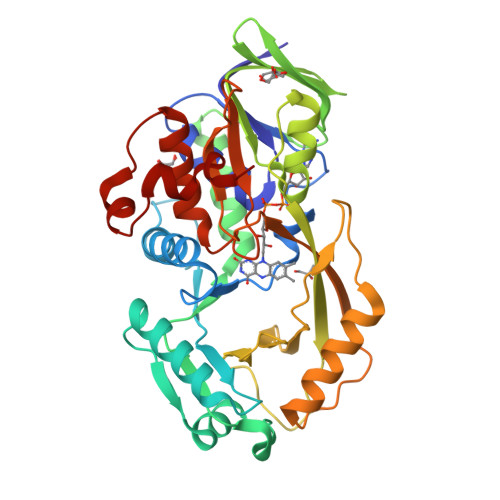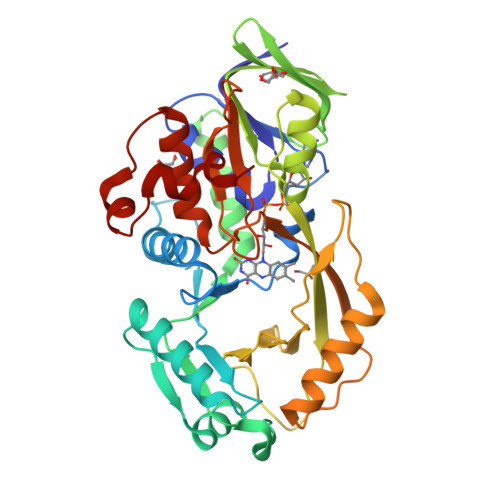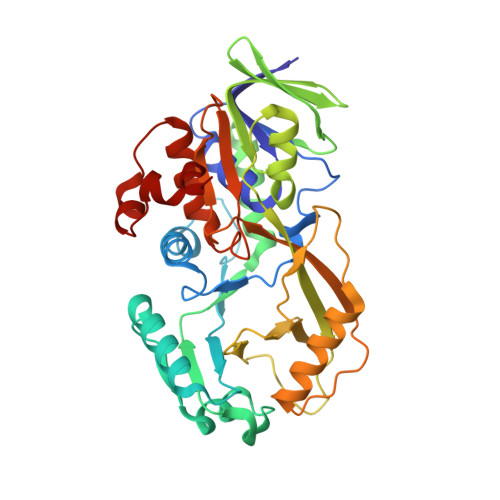A Single-Point Mutation in d-Arginine Dehydrogenase Unlocks a Transient Conformational State Resulting in Altered Cofactor Reactivity.
Iyer, A., Reis, R.A.G., Gannavaram, S., Momin, M., Spring-Connell, A.M., Orozco-Gonzalez, Y., Agniswamy, J., Hamelberg, D., Weber, I.T., Gozem, S., Wang, S., Germann, M.W., Gadda, G.(2021) Biochemistry 60: 711-724
- PubMed: 33630571
- DOI: https://doi.org/10.1021/acs.biochem.1c00054
- Primary Citation of Related Structures:
6P9D, 6PLD - PubMed Abstract:
Proteins are inherently dynamic, and proper enzyme function relies on conformational flexibility. In this study, we demonstrated how an active site residue changes an enzyme's reactivity by modulating fluctuations between conformational states. Replacement of tyrosine 249 (Y249) with phenylalanine in the active site of the flavin-dependent d-arginine dehydrogenase yielded an enzyme with both an active yellow FAD (Y249F-y) and an inactive chemically modified green FAD, identified as 6-OH-FAD (Y249F-g) through various spectroscopic techniques. Structural investigation of Y249F-g and Y249F-y variants by comparison to the wild-type enzyme showed no differences in the overall protein structure and fold. A closer observation of the active site of the Y249F-y enzyme revealed an alternative conformation for some active site residues and the flavin cofactor. Molecular dynamics simulations probed the alternate conformations observed in the Y249F-y enzyme structure and showed that the enzyme variant with FAD samples a metastable conformational state, not available to the wild-type enzyme. Hybrid quantum/molecular mechanical calculations identified differences in flavin electronics between the wild type and the alternate conformation of the Y249F-y enzyme. The computational studies further indicated that the alternate conformation in the Y249F-y enzyme is responsible for the higher spin density at the C6 atom of flavin, which is consistent with the formation of 6-OH-FAD in the variant enzyme. The observations in this study are consistent with an alternate conformational space that results in fine-tuning the microenvironment around a versatile cofactor playing a critical role in enzyme function.
Organizational Affiliation:
Department of Chemistry, Georgia State University, Atlanta, Georgia 30302, United States.




















